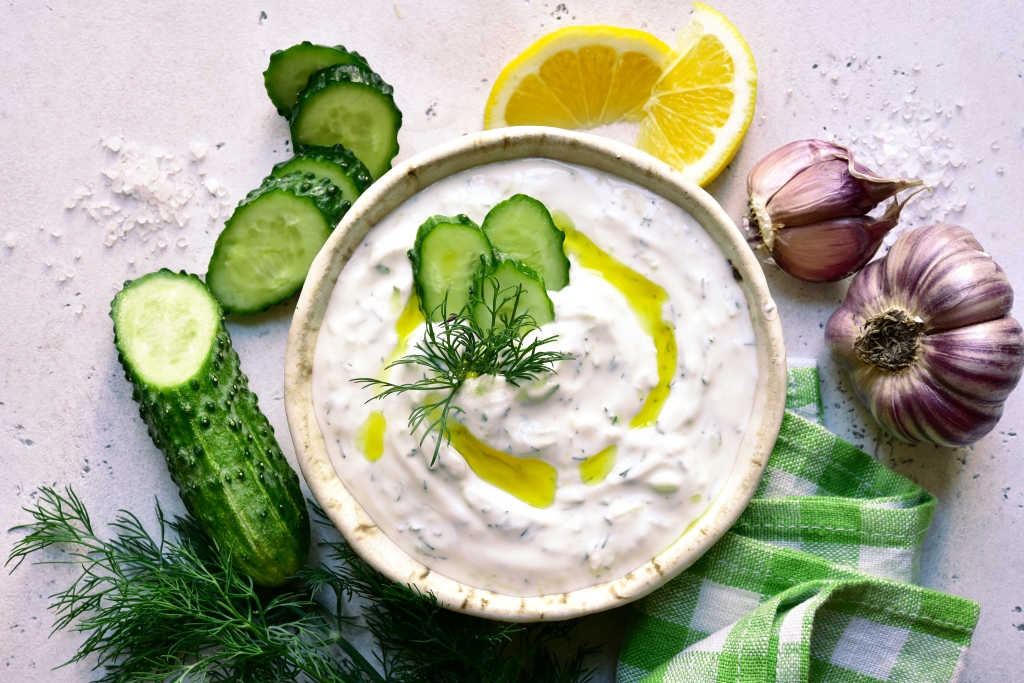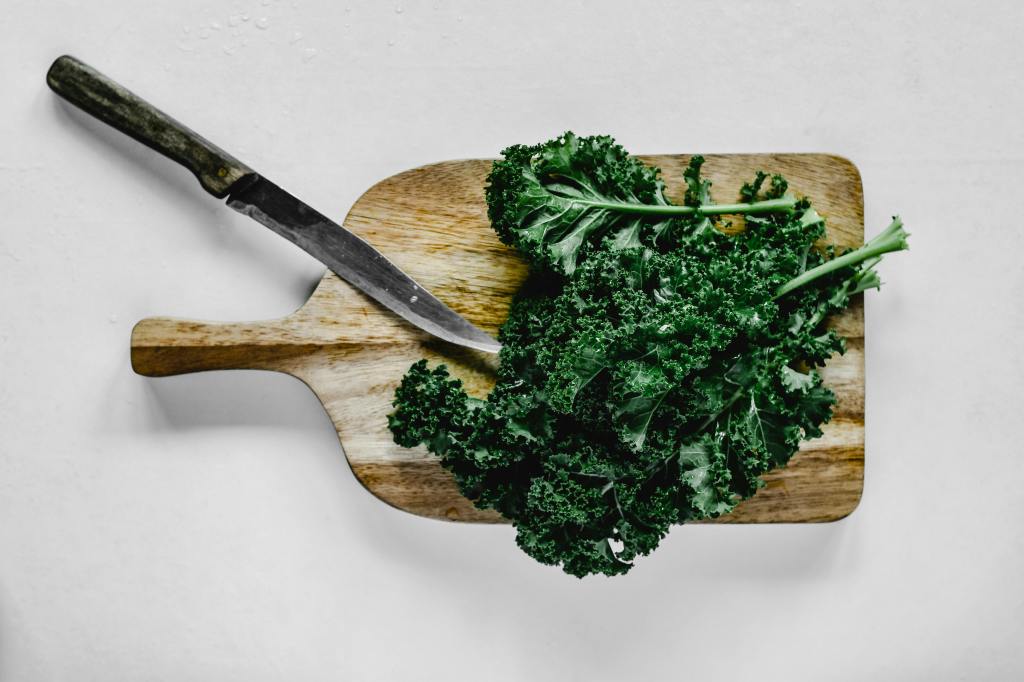Tzatziki sauce, a creamy and refreshing yogurt-based sauce that is believed originated in Greece. It’s made with strained Greek yogurt or often called labneh, grated cucumber, garlic, olive oil, lemon juice, and fresh herbs like dill or mint. Tzatziki sauce has a tangy flavour from the yogurt, a subtle sweetness from the cucumber, and a hint of garlic, making it a versatile and delicious condiment.
The key to a good tzatziki sauce is to remove excess moisture from the cucumber to prevent the sauce from becoming watery. This is usually done by salting the grated cucumber and allowing it to sit for a few minutes before squeezing out the liquid.
Tzatziki sauce is often served as a dip for pita bread, vegetables, or as a sauce for grilled meats such as lamb or chicken. It can also be used as a spread in sandwiches or wraps. The cool and creamy texture of tzatziki sauce pairs well with the bold flavours of Mediterranean cuisine, making it a popular and versatile condiment. This is Tzatziki simple recipe and here’s how you make it!

INGREDIENTS:
1 cup Greek yogurt (full-fat recommended)/Labneh
1 cucumber, grated
2 cloves garlic, minced
1-2 tablespoons extra virgin olive oil
1 tablespoon fresh lemon juice
1 tablespoon fresh dill and mint, chopped
Salt and pepper, to taste
DIRECTIONS:
- Peel the cucumber and grate it using a box grater. Place the grated cucumber in a fine mesh sieve or colander and sprinkle with a little salt. Let it sit for about 10-15 minutes to release excess moisture. Squeeze the grated cucumber to remove as much liquid as possible.
- In a mixing bowl, combine the Greek yogurt, minced garlic, olive oil, lemon juice, and chopped dill and mint. Mix well to combine.
- Gently fold in the grated cucumber until evenly distributed throughout the yogurt mixture.
- Season the tzatziki sauce with salt and pepper to taste. Adjust the seasoning according to your preference.
- Cover the bowl with plastic wrap and refrigerate the tzatziki sauce for at least 1 hour to allow the flavors to meld together.
- Serve the tzatziki sauce chilled as a dip for pita bread, vegetables, or as a sauce for gyros, souvlaki, or grilled meats.
- Any leftover tzatziki sauce can be stored in an airtight container in the refrigerator for up to 3-4 days.
Tzatziki sauce has its origins in Greek cuisine and is believed to have been created thousands of years ago. The exact history of tzatziki is not well-documented, but it has been a staple in Greek cooking for centuries.
One theory suggests that tzatziki may have originated from the Ottoman Empire, which ruled over Greece and the surrounding regions for several centuries. During this time, culinary influences from the Middle East and Central Asia may have influenced Greek cuisine, leading to the creation of tzatziki.
The word “tzatziki” itself is thought to have Turkish roots, with some sources linking it to the Turkish word “cacık,” which refers to a similar yogurt-based sauce.
Tzatziki sauce became popular in Greece and the broader Mediterranean region due to its refreshing and versatile nature. It was traditionally made with strained yogurt, cucumber, garlic, olive oil, and herbs, all of which were common ingredients in Greek and Mediterranean cooking.
Today, tzatziki sauce is enjoyed worldwide and is often associated with Greek cuisine. It has become a popular condiment and dip in many countries, appreciated for its creamy texture and flavourful taste.
VARIATIONS
- Herbs: While dill is the traditional herb used in tzatziki, some variations use mint or a combination of herbs for a different flavor profile.
- Spices: Some recipes add spices like cumin or paprika for additional depth of flavor.
- Yogurt: While Greek yogurt is the most common base for tzatziki, other variations use regular yogurt or even sour cream for a different texture and taste.
- Additions: Some variations include additional ingredients such as chopped onions, grated carrots, or chopped nuts for added texture and flavor.
- Consistency: The thickness of tzatziki can vary based on personal preference. Some like it thick and creamy, while others prefer it thinner and more sauce-like.
- Regional Variations: Different regions in Greece and the Mediterranean may have their own unique variations of tzatziki based on local ingredients and culinary traditions.





Leave a comment